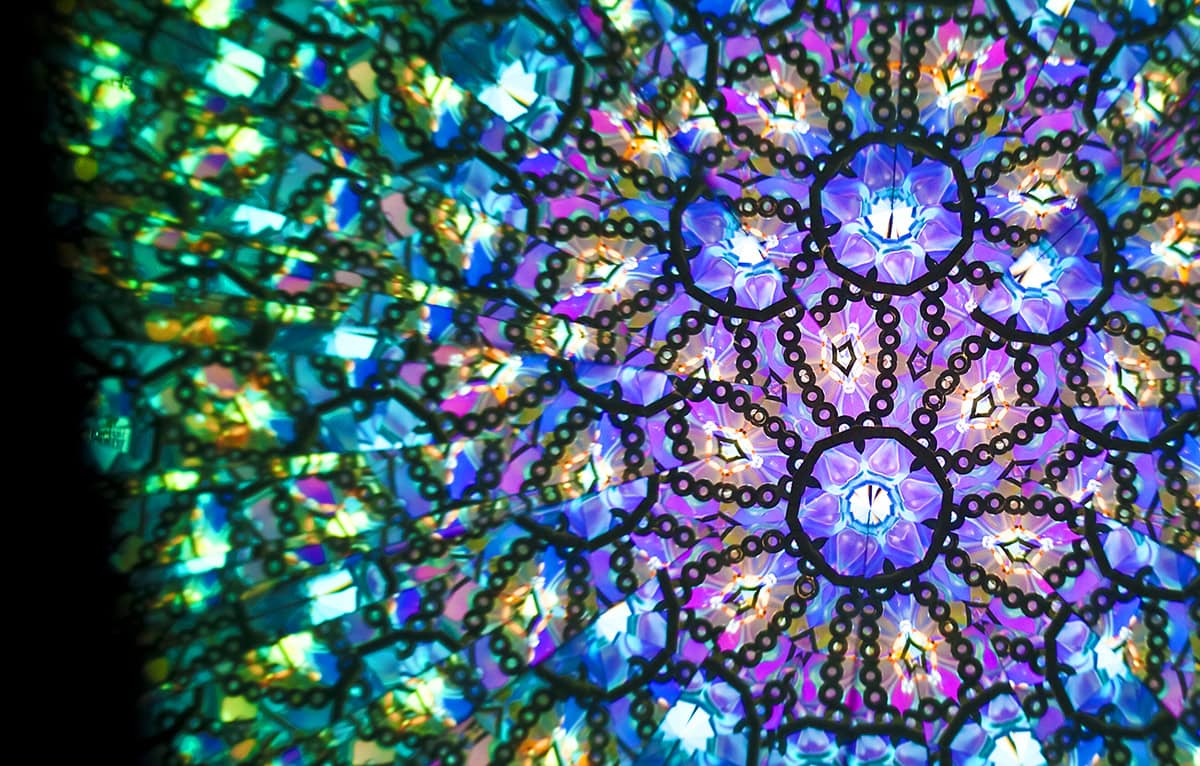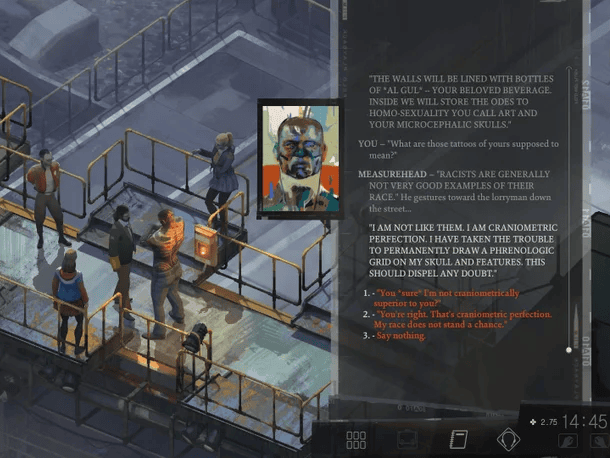After years of considering how (and what) technology could best be used in introductory history survey courses, the humanities division at the Loudoun campus of Northern Virginia Community College (NVCC) decided to offer in fall 1996 a revised version of the history of world civilization course. Instead of the traditional paper-writing assignments during the semester, students, working in teams of two, created simple, interactive multimedia projects. Each project was a combination of text and textual analysis, reference information, graphics, and audiovisual material packaged into a single, interactive program. The projects supplemented midterm and final exams and classwork grades for the course.
Rationale
This course option was the result of a long-standing desire to introduce technology skills into the humanities curriculum at NVCC. One of the college’s general education objectives was to improve technology usage among students in all courses so that “students will be[come] computer literate.” Our desire to use interactive multimedia technology stemmed from a familiarity with various authoring systems (software that enables multimedia publication) and the availability of some grant support (reassigned time) from the Virginia Community College System.
As we approached this version of the world history survey course, three sets of questions came to mind. First, how much work (and time) would it take to bring students up to speed in the use of the necessary technology (assuming that they had little or no background to begin with)? How much history content needed to be sacrificed for the development of multimedia skills? Was that a useful exchange? Second, what kind of work were students capable of producing with this new technology medium? Were the rumors that we had heard—that this next generation of students is a video- or computer-oriented generation—correct? If so, how competent were they with technology? Third, how viable was team-teaching (in this case, pairing a history teacher and multimedia instructor) in one course? What would result?
In response to possible concerns about the proposed course, and especially the use of history class time to learn a multimedia authoring system, it is our belief that requiring a multimedia project in a history course and then teaching the skills necessary to accomplish that is a valid pedagogical undertaking for a number of reasons.
First, in this computer age every course taught at the college level needs to have some technology component: technology must be pervasive. Faculty have always complained about the student ability to pigeonhole knowledge—what they learn in English, they forget in history; what they learn in history, they forget in psychology. One impossible solution to that problem is to teach everything everywhere, but if we want students to develop their computer skills, we cannot just assume that they can do so only in computer classes.
Further, giving students a brief introduction to interactive multimedia is especially valuable today given the changing faces of technology and given the fact that students might not get that introduction in any other currently offered courses. With the ever-growing presence of different technologies in the world today, students need exposure to multiple variations of technology applications—even in a history course. For instructors to prepare students to be successful in the world, all classes need to use some form of technology.
In addition, it is not clear whether the traditional written term paper will last much longer into the future. With the kind of materials (video, audio, and textual) now available to students on the World Wide Web (WWW), they are confronted with the possibility of writing (and not limited to just words alone) in a nonlinear, almost three-dimensional, multimedia format as an established way of life. Faculty must begin to discover how to teach that type of writing.
Yet another reason for offering this particular type of course is that we have always required much formal writing in the Western civilization survey courses taught at NVCC (usually four or five one-page papers, and three-page essays for the midterm and final exams). Toward this end, many of us have devoted considerable class time to the analytical writing effort. Again, we cannot just assume that students know how to write a paper of historical analysis or that they will learn that in a college composition class (which they might not even have taken yet), so it is necessary to devote class time to working on their writing skills. Now, in the newly developed course, we would devote class time to developing a different type of communication skill.
Another justification for this approach is the fact that the multimedia project in the course required students to do a substantial amount of historical research, and to do so working in groups. The students were not just pasting images, sounds, and text together; instead they had to prove that they understood what they were putting together, that they realized why they were putting the materials together in a particular order, and that they had done an introductory analysis of the primary document selected for their project.
Additionally, multimedia can allow students to think about history in a different, nonlinear way. Students often have trouble grasping the fact that history does not necessarily move along a preordained, determined line and that there are options. They also have difficulty identifying distinct elements of causality. Although this particular exercise had a limited scope, it did demonstrate that history does not move in a straight line from point “a” to point “c” via point “b”—it can move from “a” to “x” to “b” to “r” to “c.” The nonlinear nature of this exercise allowed students to explore different historical factors according to their own choice.
Finally, we wanted to see if we had the right equipment to do this type of instruction, or whether what we had was still too intrusive in the instruction process. If the equipment was intrusive, then we needed to know what had to change.
Project Requirements
The basic multimedia assignment was to locate a suitable primary source document from world history before 1500 C.E., for example the Bhagavad Gita, and put the work into electronic form. The actual wording of the assignment follows:
In this course, students are required to complete one multimedia project, which will be produced on a Macintosh Quadra work station. Students will save their work-in-progress on an Iomega zip cartridge. The project will consist of taking a single historical document from the course and “hypertexting” it using audio, textual, video and graphical materials. When finished, the document will provide a brief historical background (including map and visual imagery), information about the author and historical era, the document itself (in a hypertext format) and a conclusion. Students will be able to use material for the project from any of the following CD-ROM sources or other approved locations, including the WWW. The resulting multimedia project will be shown in class at the end of the semester. A good example of what students will be attempting to produce can be found on the CD-ROM, Creation Stories.
The project also required the creation of the necessary background graphics and text labels, as well as a credits and bibliography page, and programming for the whole project. Students then had to hypertext at least four words or phrases in the document, That is, they had to provide links to explanations of those important words or phrases. They also had to write a historical overview for the document, include a map, use some music and digital video (if possible), and incorporate some additional images that they had researched and located.
To simplify matters, the instructors developed a basic template that consisted of introduction, conclusion, and menu pages, and showed the students how to create the necessary authoring-system programming. Students could, however, modify the basic template design as they saw fit to best achieve their objectives and overall “feel” of the project. Before beginning work on any project, students had to submit a preliminary, typed proposal to the instructors for approval and initial recommendations.
The Course
The course itself was team taught. Robert Brown, an instructor of multimedia technology, and Charles Evans, a history professor, split time for the first 7 weeks of a 15-week course. Professor Evans was primarily responsible for the history content portion of the course, while Professor Brown directed student instruction in multimedia programming techniques; the use of a scanner and audio recorder; and manipulation of digital audio, image, and graphic materials. The necessary multimedia techniques remained at a basic level for use with the template, but we encouraged students to explore more advanced techniques. In retrospect, we probably spent more time on the multimedia instruction than we should have (we found that the students picked up the technology far faster than we had anticipated).
The instruction proceeded in stages, culminating in the midterm exam, which combined material from both the history and multimedia parts of the course and prepared students for the further design of their projects by requiring production of a detailed storyboard for their proposed project and an introductory historical background. While students were receiving this introductory training, they also had to continue their study of the history of the period, keeping up with the reading and taking part in class discussions.
Results
We count the course a success and would offer it again, but with some changes. What was very striking was that there was no more attrition in this course than in the usual first-semester history survey courses (about 40 percent). The students who did complete the project (11 of 18) were very enthusiastic about the course and their experience. We also noted that we had a mix of about half the class with some prior computer experience and half who began as computer novices.
With regard to our intentions, we learned, first, that it did not take that much time to bring students up to speed on the technology as long as we kept it simple and definable and used carefully designed exercises that could be referred to later by the students for reference purposes. In fact, we had far overestimated the amount of time necessary for the technology part of the course. Second, we came away from the course fairly impressed with what students were capable of doing with the technology, even in this modest exercise. Some of their programs showed real sophistication. Third, the team teaching worked well, but it might be best in the future to pair two separate courses (history and multimedia) together. We also determined that smoothly functioning equipment is a must. Hitching or erratic mice were a problem, as was slow computer speed and the lack of direct web access.
In addition to the points just noted and the purchase of the newest software versions, next time we would also try to increase hard drive space and provide all students with secure spots on the network server for saving their preliminary work; a functioning network would also make the instructor’s job easier. Finally, we may also give students examples of three or four different types of nonlinear templates to work with. Overall, though, we felt that the course achieved our goals and remains a positive option for teaching a history survey course.
Equipment and Resources
The location for the course was a Macintosh multimedia laboratory equipped with Macintosh Quadra 840av workstations that have video capture capability. Each Quadra machine carried the necessary software for the project: Macromedia’s Authorware Professional 3.0 (the design software), Adobe’s Photoshop 3.0 (for manipulation of graphic and images), and Adobe Premier 4.0 for audio and video editing (Authorware 4.0 is now available for either Macintosh or Windows platforms, as are Photoshop 4.0 and Premier 4.2). The workstations also contained an Iomega Zip drive (for storage of files) and a Nikon slide scanner (for scanning of photographic slides, if available). Students had access to flatbed scanners, laser discs, VCRs, and a CD-ROM production device that allowed each student to package the final project on a CD ROM. Students purchased Zip disks to save their work.
The lab setup contained two major drawbacks. First, it had no viable network connecting the machines together. If it had been a networked lab, it would have facilitated the interchange of information between machines, making it easier to teach the course. For example, instead of loading materials for sample exercises on each individual machine, students could have downloaded material from the central server. The absence of a network also prevented the use of electronic resources more widely in the “history content” portion of the course. This might have made the students more comfortable with the technology.
The other main drawback in the lab was the lack of direct web access from the machines. Students had to use other machines (mostly PC) on the campus or at home, download and save material and images-which was not easy since the other machines did not have Zip drives and then load them on the Macs for use in their projects. Thus, most of the information available on the web could not be easily used in the course.
In addition to this equipment, students could use source material from a number of different CD-ROMs, laser discs, and videos that we had available in our resource collection, for example: the World History laser disc; Greatest Books Collection, Great Literature Plus (over 1,900 works plus multimedia galleries); Library of the Future, 3rd ed. (over 1,750 titles); Sound Library 2000; Rand McNally World Vista Atlas (detailed maps, some music, and over 1,000 color photos); History of the World Reference Guide (video, sound, and textual information about major events and individuals); Creation Stories (contains over 90 tales); and the Grolier Multimedia Encyclopedia. Students could check these CD-ROMs for examples or download materials from them. They could also scan textual or visual material from any other books for use in their work.
Finally, students used a series of books in the class, including a history textbook (Peter Stearns, et al., World Civilizations (Volume 1); a multimedia textbook (Tay Vaughn, Multimedia: Making It Work); and a source book (Mark Kishlansky, Sources of World History, volume 1).
Charles T. Evans is assistant professor of history and teaches the western world history survey courses in a variety of on-campus and distance learning formats. Robert Brown is instructor of multimedia technology at Northern Virginia Community College and has worked on a number of major multimedia projects, including one centered on Tennessee Williams's play, The Glass Menagerie. Evans and Brown coteach a course on film and history.


